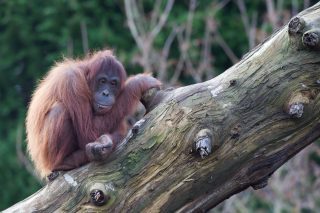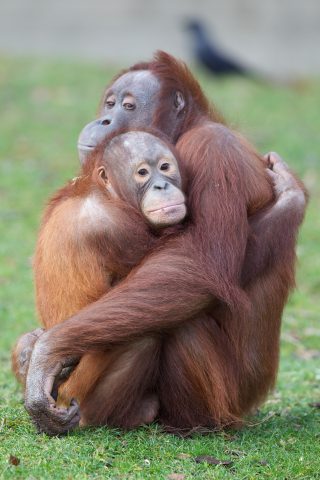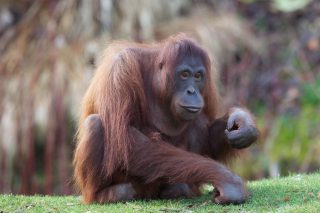Fun Facts
Person of the Forest
The name ‘orangutan’ is derived from the Malay and Indonesian words ‘orang’ meaning person and ‘hutan’ meaning forest, thus ‘person of the forest’.
Under my Umbrella
Orangutans shelter themselves from the rain and sun by holding a large leaf over their head like an umbrella.
Healthy Eaters
Orangutans are the largest frugivores on Earth (animals that mostly eat fruit). 65% of their diet consists of fruit.
Cheeky Fellas
The male orangutan’s big cheek pads are known as ‘flanges’. As their testosterone levels peak, males begin to develop bigger flanges. They can take up to 20 years to form and it is thought that their main function is to attract females.



